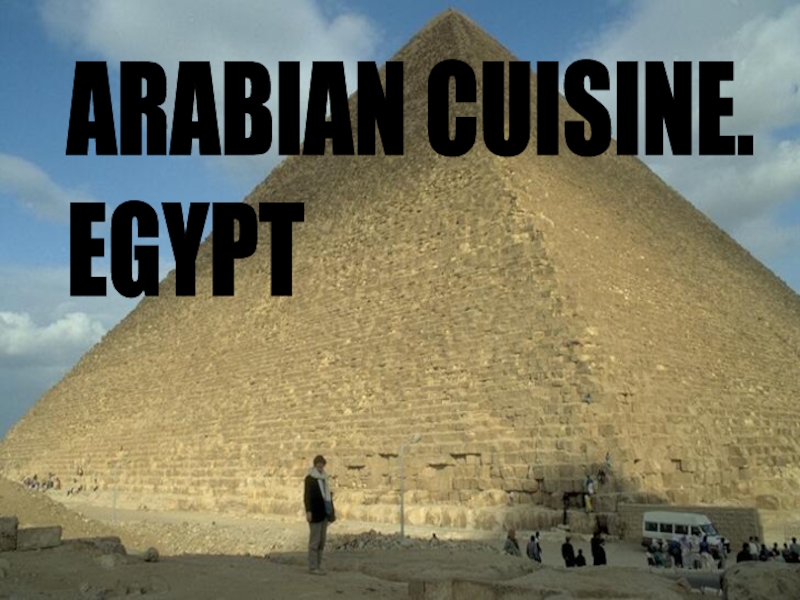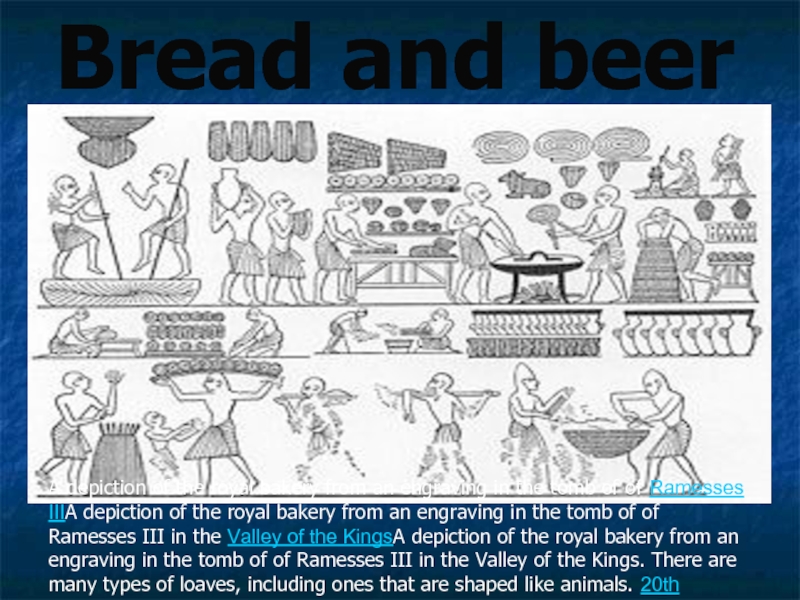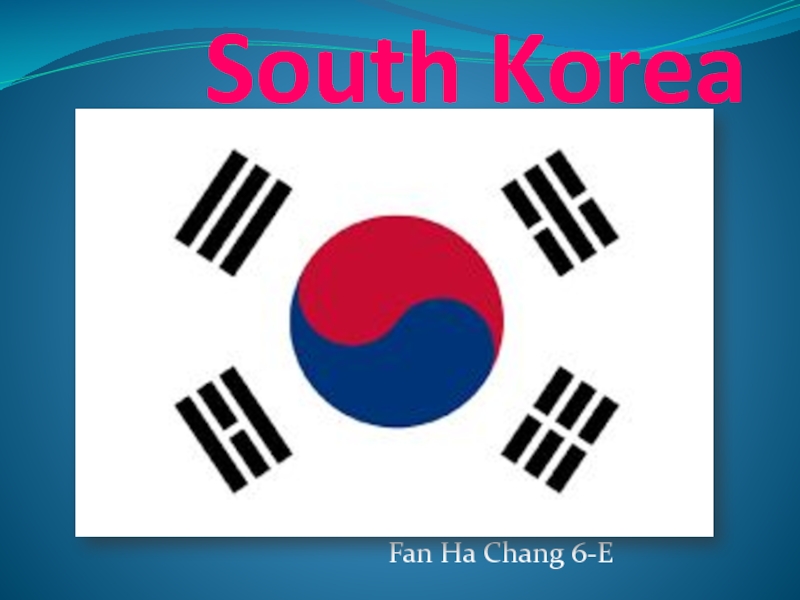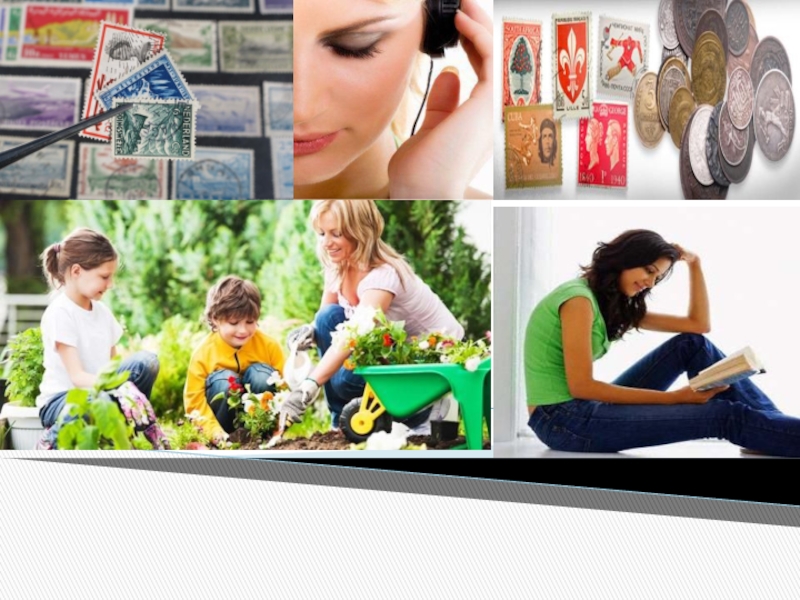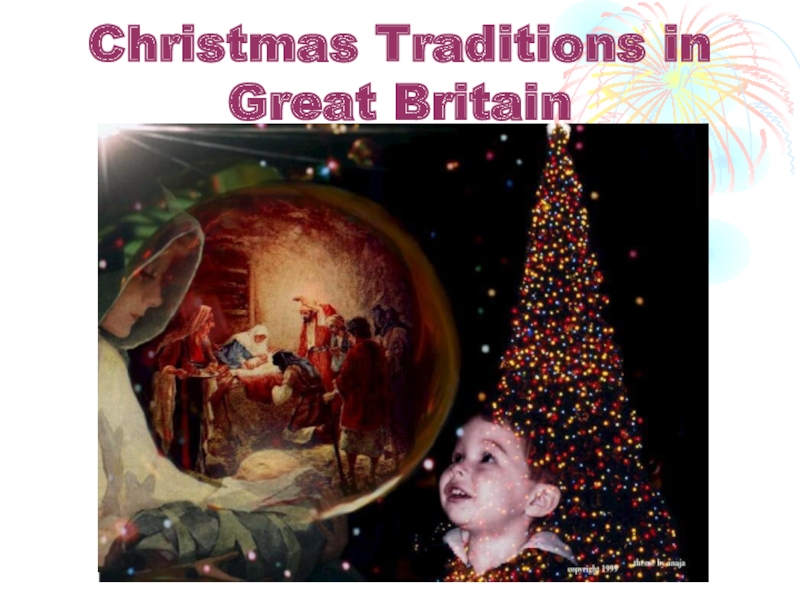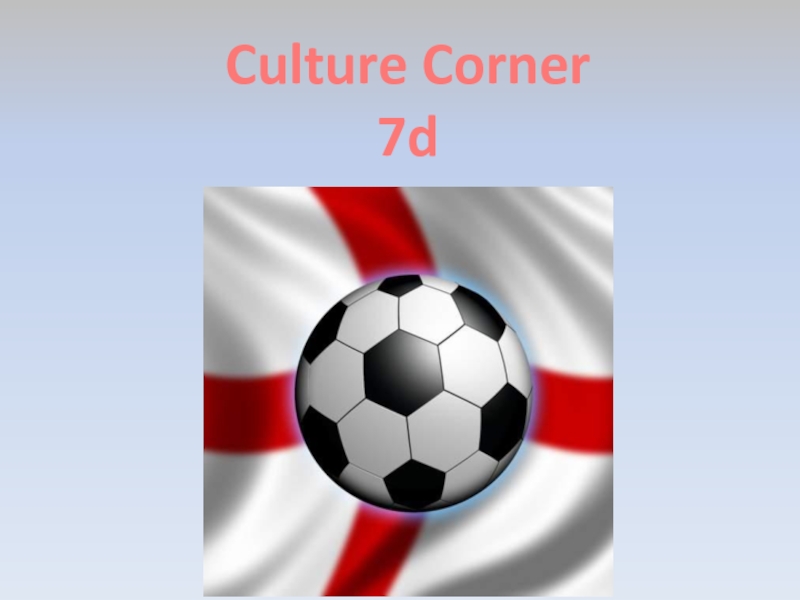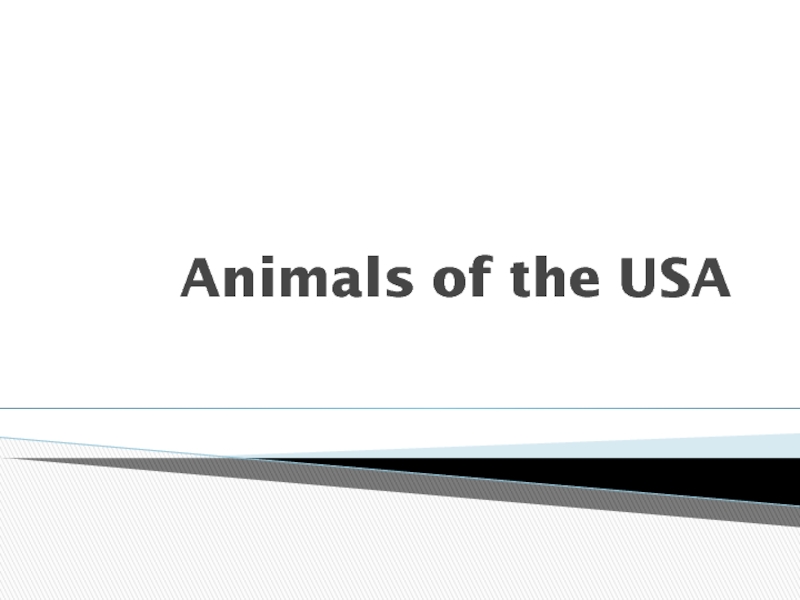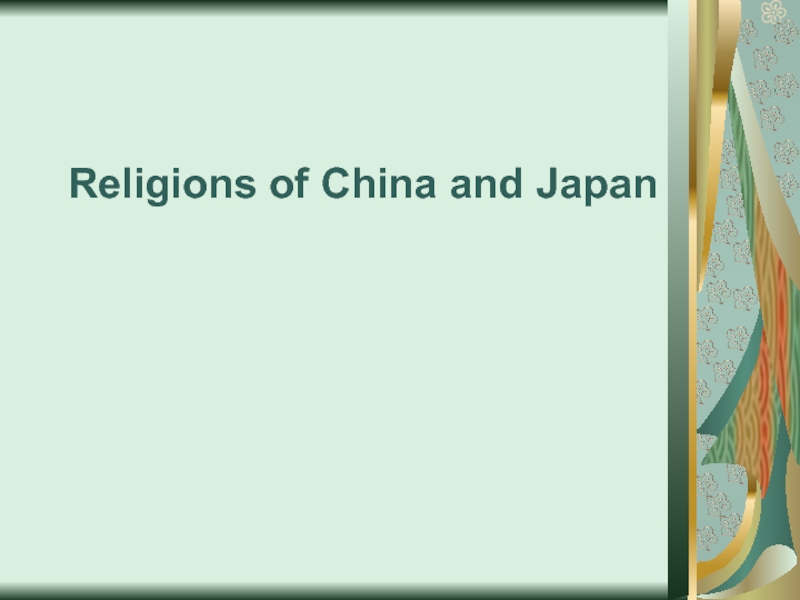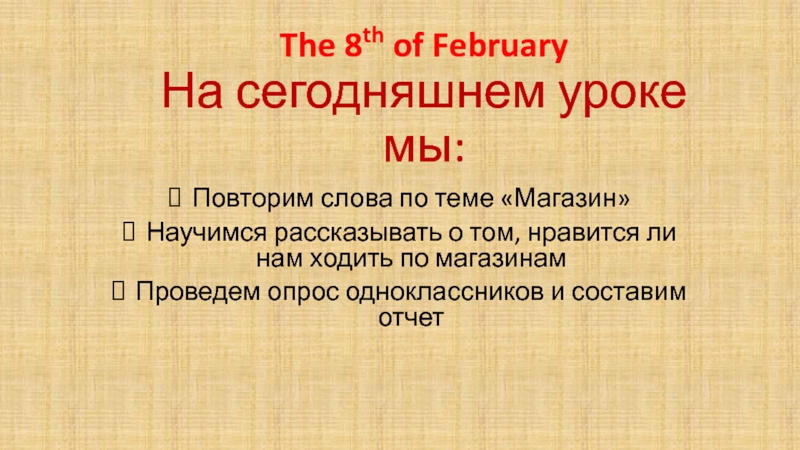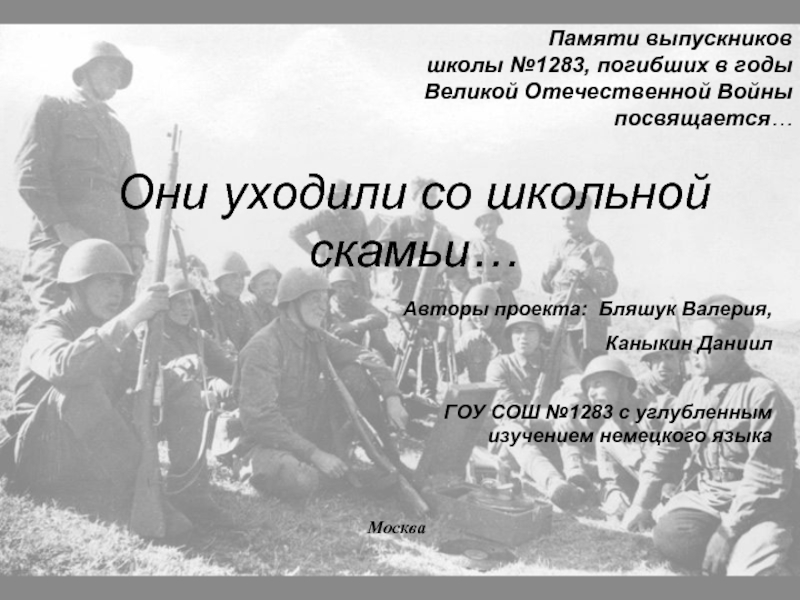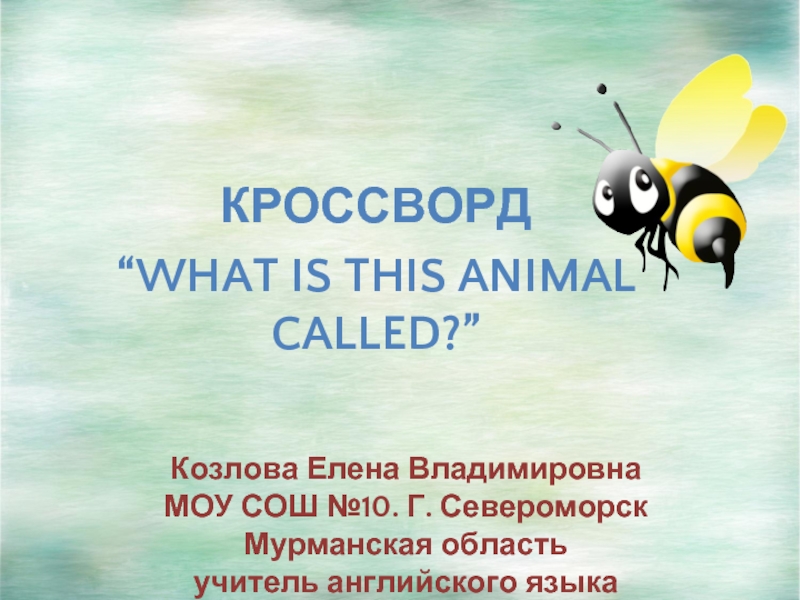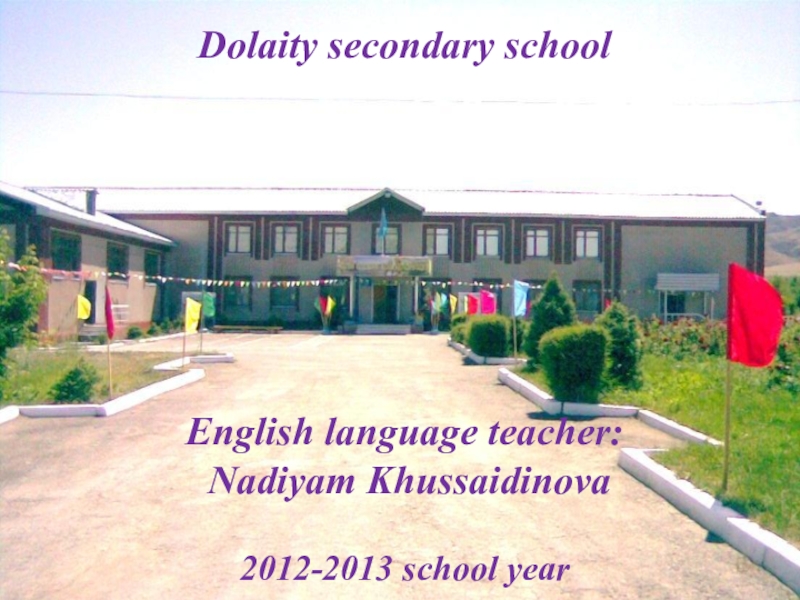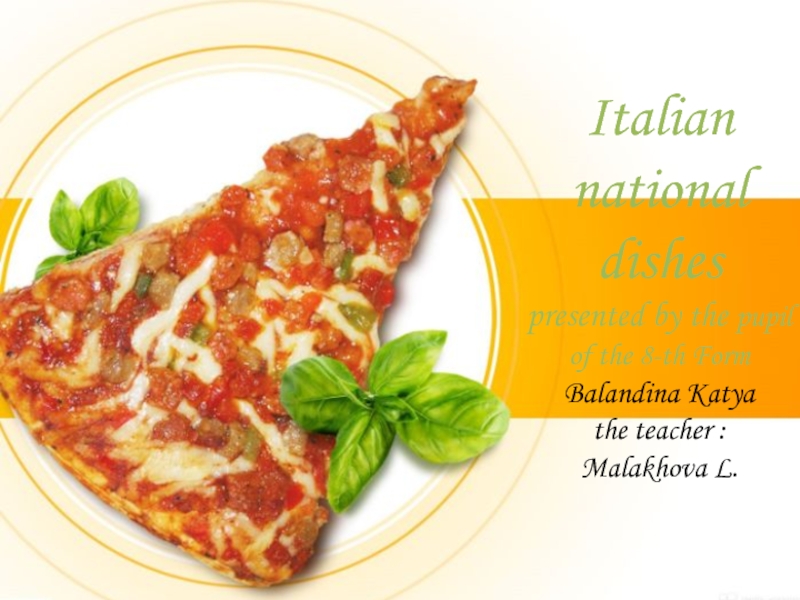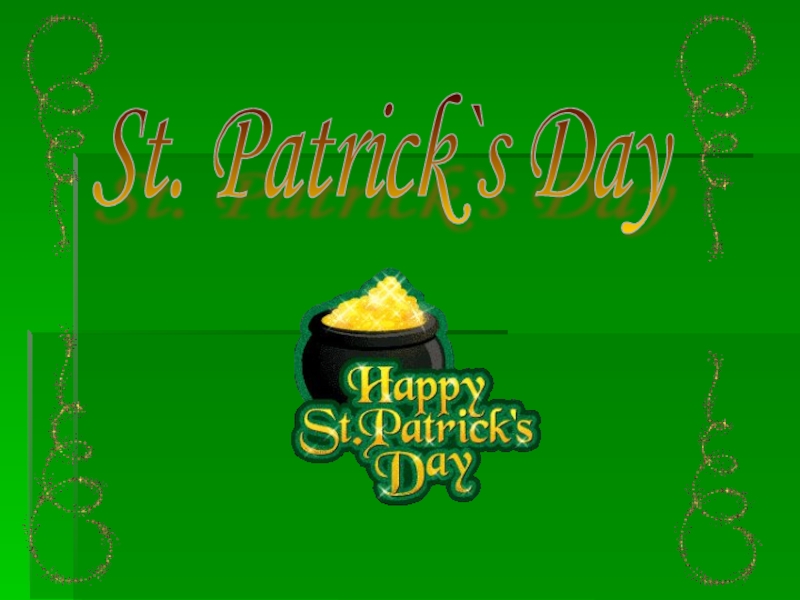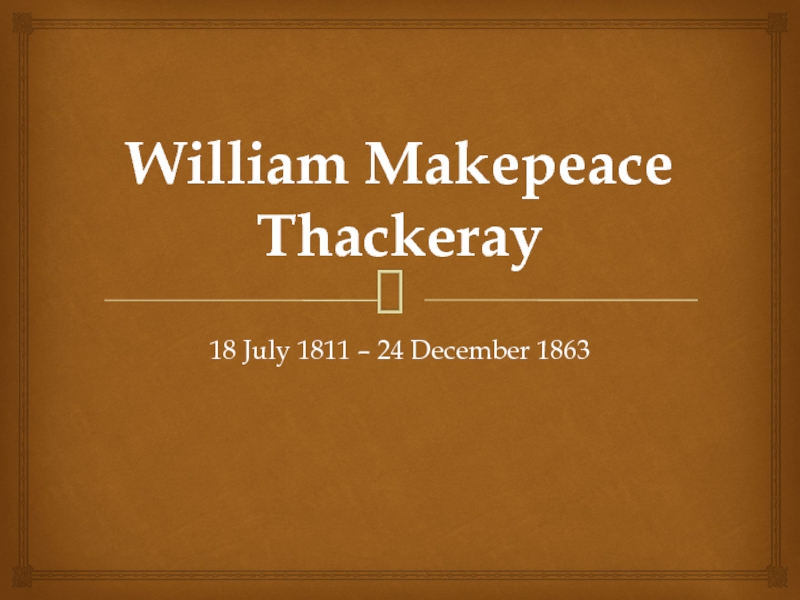Разделы презентаций
- Разное
- Английский язык
- Астрономия
- Алгебра
- Биология
- География
- Геометрия
- Детские презентации
- Информатика
- История
- Литература
- Математика
- Медицина
- Менеджмент
- Музыка
- МХК
- Немецкий язык
- ОБЖ
- Обществознание
- Окружающий мир
- Педагогика
- Русский язык
- Технология
- Физика
- Философия
- Химия
- Шаблоны, картинки для презентаций
- Экология
- Экономика
- Юриспруденция
Arabian cuisine. Egypt
Содержание
- 1. Arabian cuisine. Egypt
- 2. Слайд 2
- 3. FLAG COAT OF ARMSCapital (and largest city)
- 4. Demonym Egyptian Population 80,335,036mlArea 1,001,450 square kilometers
- 5. ETYMOLOGYOne of the ancient Egyptian names of
- 6. Religion in EgyptThe rolling calls to prayerThe
- 7. Culture of EgyptBibliotheca AlexandrinaBibliotheca
- 8. Upper Egyptian folk musicians from Kom Ombo.Egyptian
- 9. Egyptian cuisine consists of local culinary traditions
- 10. MEALSThere are few precise accounts of how
- 11. The predynasticThe predynastic cuisine differed from later
- 12. Bread and beerA depiction of the royal
- 13. Herbs and spicesDill, fenugreek, parsley, thyme, white
- 14. EATING THE EGYPTIAN WAY The typical breakfast
- 15. Скачать презентанцию
Слайды и текст этой презентации
Слайд 5ETYMOLOGY
One of the ancient Egyptian names of the country, Kemet
(kṃt), or "black land" (from kem "black"), is derived from
the fertile black soils deposited by the Nile floods, distinct from the deshret, or "red land" (dšṛt), of the desert. The name is realized as kīmi and kīmə in the Coptic stage of the Egyptian language, and appeared in early Greek as Χημία (Khēmía). Another name was t3-mry "land of the riverbank". The names of Upper and Lower Egypt were Ta-Sheme'aw (t3-šmˁw) "sedgeland" and Ta-Mehew (t3 mḥw) "northland", respectively.Слайд 6Religion in Egypt
The rolling calls to prayerThe rolling calls to
prayer that are heard five times a day have the
informal effect of regulating the pace of everything from business to entertainment. Cairo is famous for its numerous mosque minarets and church towers. This religious landscape has been marred by a record of religious extremism.Cairo's unique cityscape with its ancient mosques
Over ten million Egyptians follow the ChristianOver ten million Egyptians follow the Christian faith as members of the Coptic Orthodox Church of Alexandria.
Слайд 7 Culture of Egypt
Bibliotheca AlexandrinaBibliotheca Alexandrina is a
commemoration of the ancient Library of Alexandria in Egypt's second
largest city.Eighteenth dynastyEighteenth dynasty painting from the tomb of ThebanEighteenth dynasty painting from the tomb of Theban governor RamoseEighteenth dynasty painting from the tomb of Theban governor Ramose in Deir el-Madinah
Слайд 8Upper Egyptian folk musicians from
Kom Ombo.
Egyptian music is a
rich mixture of indigenous, Mediterranean, African and Western elements.
Contemporary
Egyptian music traces its beginnings to the creative work of people such as Abdu-l Hamuli, Almaz and Mahmud Osman, who influenced the later work of Egyptian music giants such as Sayed DarwishContemporary Egyptian music traces its beginnings to the creative work of people such as Abdu-l Hamuli, Almaz and Mahmud Osman, who influenced the later work of Egyptian music giants such as Sayed Darwish, Umm KulthumContemporary Egyptian music traces its beginnings to the creative work of people such as Abdu-l Hamuli, Almaz and Mahmud Osman, who influenced the later work of Egyptian music giants such as Sayed Darwish, Umm Kulthum, Mohammed Abdel WahabContemporary Egyptian music traces its beginnings to the creative work of people such as Abdu-l Hamuli, Almaz and Mahmud Osman, who influenced the later work of Egyptian music giants such as Sayed Darwish, Umm Kulthum, Mohammed Abdel Wahab and Abdel Halim HafezContemporary Egyptian music traces its beginnings to the creative work of people such as Abdu-l Hamuli, Almaz and Mahmud Osman, who influenced the later work of Egyptian music giants such as Sayed Darwish, Umm Kulthum, Mohammed Abdel Wahab and Abdel Halim Hafez. These prominent artists were followed later by Amr Diab. He is seen by many as the new age "Musical Legend", whose fan base stretches all over the Middle East and Europe. From the 1970s onwards, Egyptian pop music has become increasingly important in Egyptian culture Слайд 9Egyptian cuisine consists of local culinary traditions such as Ful
Medames consists of local culinary traditions such as Ful Medames,
Kushari consists of local culinary traditions such as Ful Medames, Kushari and Molokhia consists of local culinary traditions such as Ful Medames, Kushari and Molokhia, while sharing similarities with food found throughout the eastern Mediterranean consists of local culinary traditions such as Ful Medames, Kushari and Molokhia, while sharing similarities with food found throughout the eastern Mediterranean like kebab consists of local culinary traditions such as Ful Medames, Kushari and Molokhia, while sharing similarities with food found throughout the eastern Mediterranean like kebab and falafel.Most Egyptians perhaps consider Ful Medames, or mashed fava beans, to be the national dish, or mashed fava beans, to be the national dish. Ful is also used in making Ta'miyya or Falafel (Arabic: طعمية – فلافل). Bread accompanies most Egyptian meals; local bread is called Eish Masri or Eish Baladi (Egyptian Arabic: عيش), a word which also means life.
Ancient Egyptians are known to have used a lot of garlic and onion in their everyday dishes.
Egyptian farm
Слайд 10MEALS
There are few precise accounts of how many meals were
eaten, but it has been assumed that the wealthy would
have two or three meals a day; a light morning meal, a larger lunch and dinner later in the evening. The general population would most likely eat a simple breakfast of bread, beer and onions and a main meal in the early afternoon.Food preparation
Food could be prepared by stewing, baking, boiling, grilling, frying or roasting and spices and herbs were added for flavor, though the former were expensive imports and therefore confined to the tables of the wealthy.
Слайд 11
The predynasticThe predynastic cuisine differed from later eating habits due
to changes in climate. Egypt went from being a lush
region to a dryer climate. Initially, there was plenty of game such as antelopeThe predynastic cuisine differed from later eating habits due to changes in climate. Egypt went from being a lush region to a dryer climate. Initially, there was plenty of game such as antelope, gazelleThe predynastic cuisine differed from later eating habits due to changes in climate. Egypt went from being a lush region to a dryer climate. Initially, there was plenty of game such as antelope, gazelle, hippoThe predynastic cuisine differed from later eating habits due to changes in climate. Egypt went from being a lush region to a dryer climate. Initially, there was plenty of game such as antelope, gazelle, hippo, crocodile, ostrich, waterfowl and fresh and salt water fish. Smaller game like wild assThe predynastic cuisine differed from later eating habits due to changes in climate. Egypt went from being a lush region to a dryer climate. Initially, there was plenty of game such as antelope, gazelle, hippo, crocodile, ostrich, waterfowl and fresh and salt water fish. Smaller game like wild ass, sheep, goats, wild cattle and even hyenas were eaten.The New KingdomThe New Kingdom was a period with innovations in diet due to foreign trade and warfare. Pomegranates were introduced and almonds were imported. It is also possible that apples and apricots were imported on a small scale, and by Greco-Roman times quinces, pears, plums, peaches, filbert, walnut, pine nut and pistachios were introduced.
Honey was the primary sweetener, but was rather expensive. There was honey collected from the wild, and honey from domesticated bees kept in pottery hives. A cheaper alternative would have been dates or carob.
Hunting game birds and plowing a field. Depiction on a burial chamber from c. 2700 BC.
Слайд 12Bread and beer
A depiction of the royal bakery from an
engraving in the tomb of of Ramesses IIIA depiction of
the royal bakery from an engraving in the tomb of of Ramesses III in the Valley of the KingsA depiction of the royal bakery from an engraving in the tomb of of Ramesses III in the Valley of the Kings. There are many types of loaves, including ones that are shaped like animals. 20th dynasty.Слайд 13Herbs and spices
Dill, fenugreek, parsley, thyme, white and black cumin,
fennel, marjoram and mint are all native to Egypt and
were used in cooking in ancient times. Both cinnamon and pepper were imported from the New Kingdom and onwards.DRINKS
Amphoras used for wine found at AbydosAmphoras used for wine found at Abydos. Louvre Museum, Paris.
Beer, brewed since the Predynastic Period at least, was the main beverage of the ancient Egyptian population, drunk by rich and poor, old and young. The alcohol content was low, and the beer had to be consumed immediately, necessitating daily brewing. It became more widespread from the New Kingdom on. Water, drawn from wells or the river and, to a small degree milk, were also drunk. Wines from grapes, dates and figs were available, but were expensive and something reserved for the elite.
Слайд 14EATING THE EGYPTIAN WAY
The typical breakfast consists of tea
and foul, or beans, bread and cheese or eggs and
jam.The afternoon family meal, eaten around 3:00 p.m., is more elaborate and consists of cooked chicken, beef or lamb, fish, vegetables with rice, salads and pickles.
A light supper at 8:00 p.m. includes yogurt, fruit or cheese.
